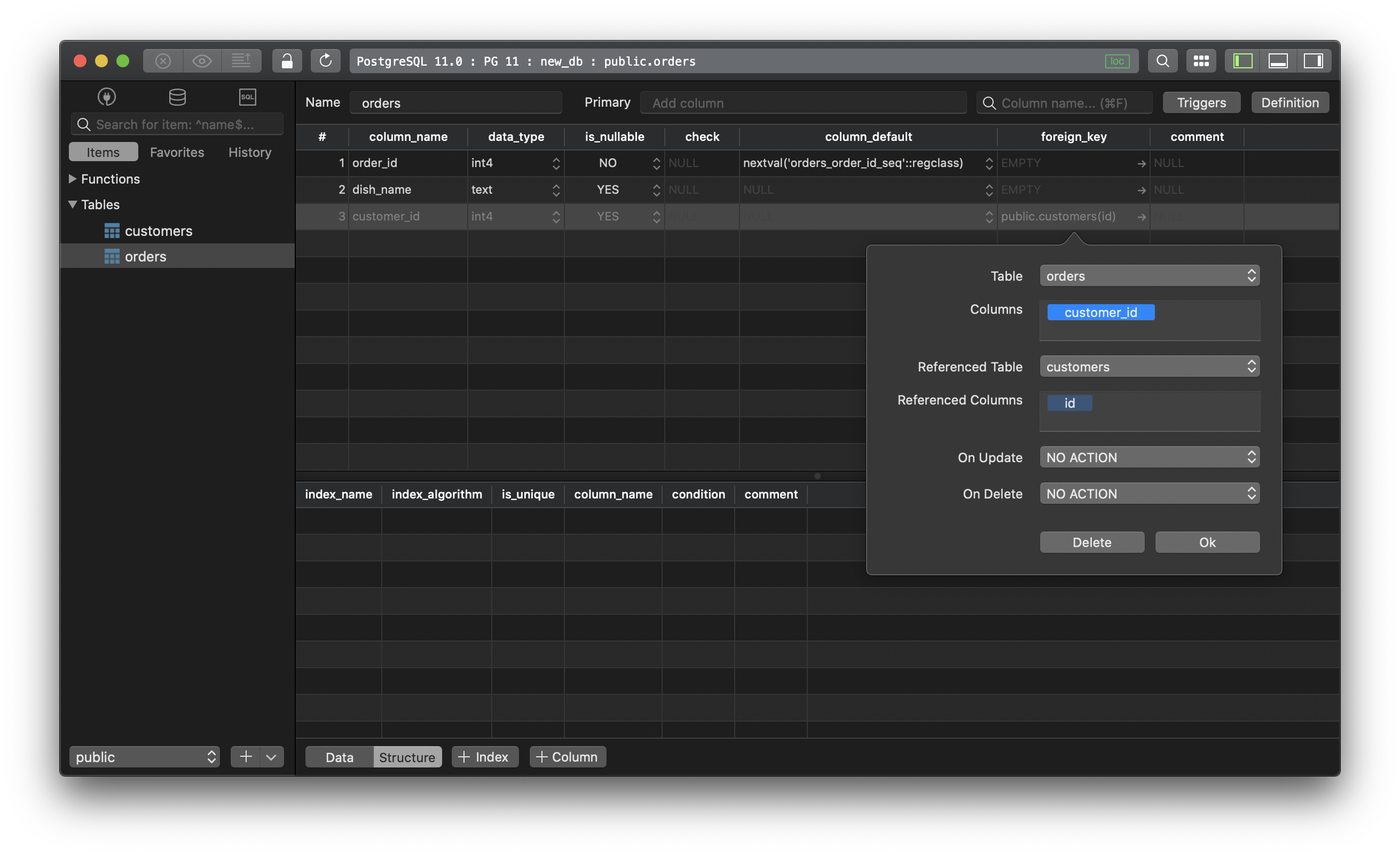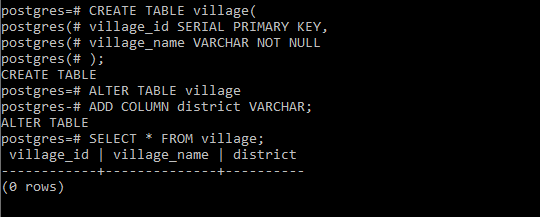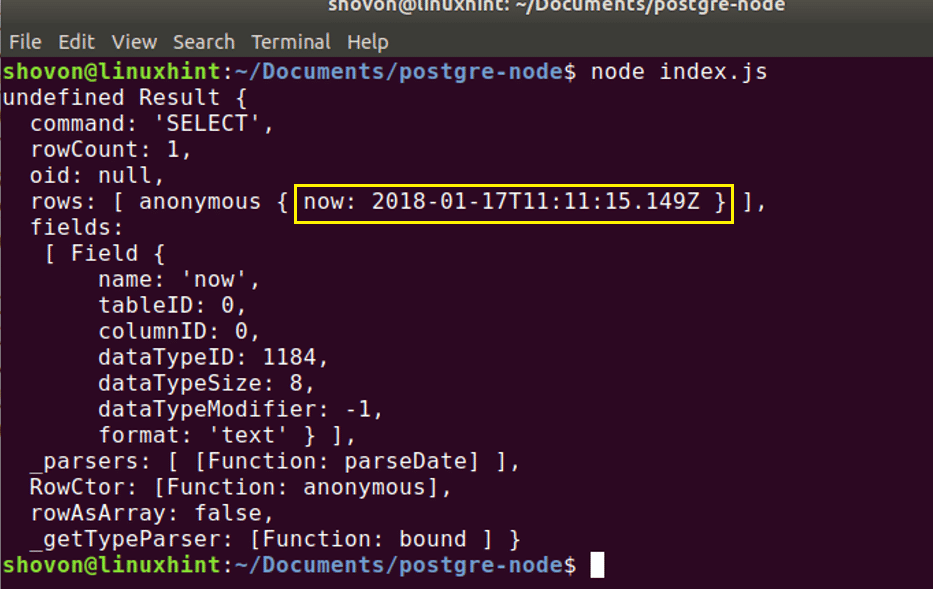
User.Note that this changes only the table in the database, not the model in the JavaScript side. ALTER TABLE usuarios DROP COLUMN id ALTER TABLE usuarios ADD. With this call, Sequelize will automatically perform an SQL query to the database. Flask SQLAlchemy Postgres auto increment non primary key Trying to insert data into my table. A model can be synchronized with the database by calling model.sync(options), an asynchronous function (that returns a Promise). This is where model synchronization comes in. However, what if the table actually doesn't even exist in the database? What if it exists, but it has different columns, less columns, or any other difference? When you define a model, you're telling Sequelize a few things about its table in the database. After being defined, we can access our model with. We want our model to be called User, and the table it represents is called Users in the database.īoth ways to define this model are shown below. To learn with an example, we will consider that we want to create a model to represent users, which have a firstName and a lastName. Extending Model and calling init(attributes, options)Īfter a model is defined, it is available within sequelize.models by its model name.Calling fine(modelName, attributes, options).Models can be defined in two equivalent ways in Sequelize: Usually, models have singular names (such as User) while tables have pluralized names (such as Users), although this is fully configurable. This name does not have to be the same name of the table it represents in the database. The model tells Sequelize several things about the entity it represents, such as the name of the table in the database and which columns it has (and their data types).Ī model in Sequelize has a name.
ALTER TABLE ADD COLUMN POSTGRES HOW TO
ALTER TABLE orders ADD CONSTRAINT fkcityid FOREIGN KEY (cityid) REFERENCES city (id) How to drop FOREIGN KEY in PostgreSQL. In Sequelize, it is a class that extends Model. ALTER TABLE orders ADD COLUMN IF NOT EXISTS cityid (id) And then add a foreign key to it.

A model is an abstraction that represents a table in your database. When a column is added with ADD COLUMN, all existing rows in the table are initialized with the columns default value (NULL if no DEFAULT clause is specified).

We know that all the rows in that table should have the new default value but we know also that the table was not rewritten.In this tutorial you will learn what models are in Sequelize and how to use them. The key word COLUMN is noise and can be omitted. The column we added has that set in pg_attribute: We can see that when we check for our current table. "pg_attribute_relid_attnum_index" UNIQUE, btree (attrelid, attnum)Īs soon as a new column with a non null default value is added to a table these columns get populated. "pg_attribute_relid_attnam_index" UNIQUE, btree (attrelid, attname) The catalog table pg_attribute got two new columns called “attmissingval” and “atthasmissing”:Ĭolumn | Type | Collation | Nullable | Default The question is how does that work in the background? Actually the idea is quite simple. No sequential scan at all and it only took 5 ms for the alter table to complete.

Postgres=# insert into test (a,b,c) select aa.*, md5(aa::text), now() from generate_series ( 1, 1000000 ) aa Postgres=# alter table test add column d text default 'a' Īs you can see a sequential scan happened when the alter table was performed and it took more than a second for the alter table to complete. Postgres=# select seq_scan from pg_stat_user_tables where relid = 'test'::regclass This gave us 1’000’000 rows and what I want to do is to check the amount of sequential scans against the table before and after the alter table. Postgres=# create table test ( a int, b text, c timestamp ) We start by creating a test table in PostgreSQL 10: With PostgreSQL 11 this is not anymore the case and adding a column in such a way is almost instant. Up to PostgreSQL 10 when you add a column to table which has a non null default value the whole table needed to be rewritten.

As I am currently preparing my session for the Swiss PGDay which is about some of the new features for PostgreSQL 11, I though this one is worth a blog post as well.


 0 kommentar(er)
0 kommentar(er)
